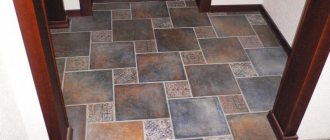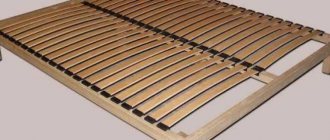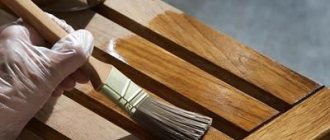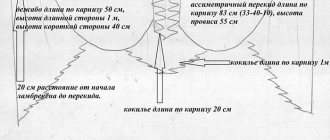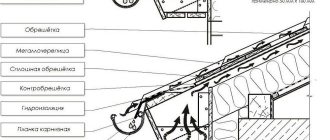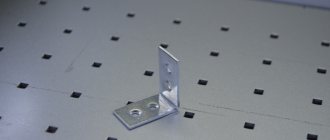Test Drive. We are studying the self-tapping dowel KLA M from the Finnish company Sormat. The KLA M dowel is a fastening option for drywall, made in metal (there is also a nylon version of the dowel). Article: 75920.
According to the manufacturer, the Finnish company Sormat, this fastener is extremely easy to install and is a reliable option for attaching light objects (for example, paintings, photo frames, lamps) to plasterboard walls. We will check all these statements thoroughly.
Contents of delivery
For testing, a set of 4 dowels with 4 screws was purchased at the Leroy Merlin store. The price for fasteners is quite high - about 20 rubles (or $0.3) per anchor. For this amount you can purchase 50 self-tapping screws of the “GKL-metal” type. Therefore, such a high cost may be an indirect sign of quality, and this fact is encouraging in advance.
The label confirms that the fasteners were manufactured by - apparently, this is the company that packages Sormat products.
Definition of MOLLE and PALS
You may have heard the term “MOLLE compatible” when it comes to gear carrying systems, but this is very incomplete information. MOLLE is an acronym that stands for Modular Lightweight Load-carrying Equipment. This is a military technical standard that relates to the design of load-bearing equipment used by NATO military forces. This versatile design allows smaller bags and cases to be attached and detached as needed using the attachments provided on the equipment.
Main characteristics
| Type: | self-tapping dowel |
| Application: | anchor for walls made of standard, double plasterboard and MDF walls |
| Material: | Cink Steel |
| Packing options: | KLA M - metal dowel, |
| KLA MP - metal dowel with screw | |
| Weight: | 4 grams |
| Nominal pullout force: | 0.08 kN |
| Nominal shear force: | 0.27 kN |
Dimensions and design
The KLA M dowel has an original design, but is at the same time quite compact.
The length of the dowel is 31 mm.
The diameter of the dowel head is 11 mm. Thickness (excluding thread) - from 7 mm to 5.5 mm.
The tail part of the dowel is a drill of an original shape - in the form of a three-pronged crown.
The thread on the dowel has a very large pitch - almost 5 mm between adjacent threads. On the one hand, such a thread allows you to screw the dowel into the wall with minimal effort - literally a few rotations and you're done (you don't even need a screwdriver, a screwdriver is enough). On the other hand, the mounting hole in drywall or MDF will not be unnecessarily broken and weakened.
The internal profile of the dowel head is similar to the Philips cross. But exactly what is similar. During installation, it turned out that a slotted screwdriver is more convenient when working with this dowel. But let's not get ahead of ourselves.
How to choose a drill for a dowel
To prevent the dowel from turning in the wall, you need to start drilling with a drill of a smaller diameter, for example a ten-point dowel, start drilling with a six, then an eight. After this comes an “interesting moment”, an important one, to be more precise. If the wall is concrete, then insert a six into the hammer drill and drill with a blow, then an eight with a blow. After all this, we insert the drill ten millimeters (this is the size of our dowel), but we drill without impact.
This is the only way we will get a hole of the required diameter, because a blow (drill in hammer drill mode) breaks the hole.
Everyone who says that a drill of a smaller diameter is needed is wrong; a plastic dowel simply will not fit into such a hole. Plaster walls are drilled in exactly the same way, but from the very first drill, without impact, plaster walls are too capricious; if you drill with a hammer drill, whole pieces may fall out, then there will be no place to hammer the dowel.
There is nothing simpler, there is a marking on the dowel, the thickness and length are written there, for example 8 X 50 or 10 X 100, often they even indicate that it is millimeters.
When you buy dowels, they are in boxes labeled, if you really can’t find out the thickness, then you need to take a measurement, it is measured with a caliper under the crown or at the very beginning, where there are no extensions or slots yet.
The drill is chosen exactly the same thickness, no more, no less, the drills are also signed (marked), if the marking is not visible, then you need to measure the diameter - Attention! You need to measure the width of the pobedite soldering, it is this that gives the diameter of the hole, the drill itself is thinner!
More questions on your topic:
leave a comment
Builder's Dictionary :: Repair questions :: Calculators :: Special equipment :: Miscellaneous
2006 - 2020 user agreement :: contact with the site administration
How to tighten the KLA M dowel?
The manufacturer recommends using a screwdriver with a PZ2 tip. But we will not blindly believe the recommendations. We'll try everything.
We start with PZ (Pozidriv). And we find out that only PZ1 fits tightly and deeply into the dowel. It is with just such a screwdriver (or a bat from the set) that the tricky Finnish dowel can be twisted more conveniently and confidently.
Let's move on to PH (Philips). Here, too, PH1 shows itself best.
What about the good old slot? Surprisingly, the KLA M dowel can be turned perfectly even with a 5 mm slotted screwdriver.
Therefore, before purchasing a KLA M dowel, you should once again make sure whether there are thin screwdrivers in the house - PZ1, PH1, or slotted 5 mm.
Fastening objects of different weights
Before drilling a hole for a dowel-nail or plastic spacer fastener, it is worth clarifying the loads that the element installed in the wall will have to bear. The heavier and more massive the structure being hung, the larger the fasteners required. A light shelf can be fixed with a 5 mm dowel, a heavy rack can be fixed with its analogue from 10 to 12 mm in diameter.
Lungs
For light weight items, lightweight mounting elements are used; a quickly installed dowel-nail is also suitable. The hole drilled into walls made of concrete, reinforced concrete, or solid brick is the same as the diameter of the fastener. For an outer size of 6 mm, a length of 40 mm is enough. When hanging chandeliers and ceiling lamps, it is better to deepen the dowel further. Fasteners with parameters 6x60 mm are suitable here.
Medium weight
If you need to hang a shelf or other medium-weight object, you will have to take a more reliable type of fastening. Impact dowels with a diameter of 8 mm or more are suitable. The depth, respectively, and the length of the product used are determined by the location of its installation. If a 60 mm dowel is fixed into the wall, then an analogue 20-30 mm longer will be needed for the ceiling.
It is important to correctly calculate the number of clamps. Each dowel, when installed correctly, should bear a load of no more than 2.5 kg of the weight of the object
That is, for a shelf or rack weighing 10 kg, you will have to drill 4 holes or more in the wall to provide for additional risk factors.
If you have pets that can jump onto the suspended structure, it is worth adding an additional safety load of 4-5 kg. The number of dowels will increase proportionally by 2 units.
Heavy
Massive interior items that do not have floor support require careful fixation. The diameter of the dowel and drill here will be at least 10 mm, the penetration can be made 60 mm or more into the wall, 80 mm into the ceiling. The fastener itself must be of the impact type - the counter part is hammered into it. For hollow and cellular walls, certain restrictions are set on external loads, as well as the fasteners used - it is better to use chemical or special anchors with an increased opening area.
If you need to fix elements of home sports equipment on the wall or ceiling, they are also hung separately. Here they use anchor bolts, the diameter of which is selected individually, but not less than 8x60 mm.
Check in action
We will check the dowel using 12.5 mm drywall. Available in standard (single-sheet) and double-sheet versions.
Installation in a standard sheet of plasterboard.
Again, according to the recommendations of the Sormat company, you can screw the KLA M dowel into drywall without prior preparation. Let's do so. We take aim, stick the dowel into the plasterboard and twist it.
The dowel screws into the sheet without much effort. In this case, there are very few plaster crumbs, which indicates that the attachment point will be quite strong and not broken.
This is what the KLA M self-tapping dowel looks like from the front side, completely screwed in:
And here is the back side of a sheet of drywall. The dowel came out of the sheet by about 15 mm (remember, the sheet thickness is 12.5 mm). It is worth noting that the official metrics indicate that there must be at least 19 mm of empty space behind the sheet. It looks like the manufacturer played it safe.
We will check the pull-out force. To do this, screw the supplied screw into the dowel. We make a loop to the screw from steel wire. To which we hook an ordinary home steelyard.
As Sormat assures, the pullout force of this fastener option is 0.08 kN. From the school physics course, you can remember that 1kN (Kilo-Newton) = 101.9716 kg. From this ratio it turns out that the fastener can withstand a pullout load of 8.16 kg.
Using the steelyard, we found out that the KLA M dowel confidently holds 8 and even 9 kg. And this is in a regular sheet of drywall.
Speaking in terms of domestic use, we find that 1 KLA M dowel screwed into a plasterboard ceiling will easily support the weight of an 8 kilogram chandelier.
What about the shear load? The manufacturer gives the figure 0.27 kN. This corresponds to 27.5 kg. Such a load cannot be applied using a steelyard.
Again, in everyday terms, it turns out that 4 KLA M dowels on a vertical gypsum board wall will support the weight of... a refrigerator. True, the sheet of drywall itself will no longer withstand such loads.
Installation in double sheet of plasterboard
When installing into double sheets, Sormat recommends using an 8 mm drill bit. Let's try this and that.
Screwing without drilling is similar to single-layer gypsum board. Well, maybe a little more effort is needed to tighten the dowel flush.
This is what the reverse side looks like - the protrusion is less than 5 mm:
Now we mount it with preliminary drilling.
Let's drill a hole.
We screw in the KLA M dowel. The dowel is screwed into the drilled hole somehow more joyfully and cheerfully. Therefore, if you have something to drill at hand, then it is better to mount the dowel in this way. Only one question arises along the way: will drilling weaken the fasteners?
We check the pulling force as before with a steel loop and a steelyard.
Result? Without surprises, with Finnish calm, the KLA M dowel again withstood over 8 kilograms of pulling force. Moreover, both installation options showed the same result. Fears about drilling turned out to be in vain.
Dowel "umbrella"
The name itself speaks for itself. The fastener works on the principle of opening an umbrella. In other words, the plastic tip of the product opens after passing through the plasterboard layer, providing a reliable stop.
Installation of such products requires preliminary drilling of holes of the appropriate diameter. The fastener is suitable for fixing all kinds of structures on plasterboard ceilings. Thus, the “umbrella” dowel becomes indispensable when installing chandeliers. The stops opened behind the sheet material will evenly distribute the load on the plane.
Which screws and self-tapping screws are suitable for the KLA M dowel?
Let's find out which screws and self-tapping screws are best suited for screwing into the KLA M dowel.
To do this, we will take 5 types of fasteners, which we will try on the dowel in turn, screw in and evaluate the quality of the connection. So, here are similar screws and self-tapping screws:
We start from right to left. Screw 4.0x30 . Such a screw effortlessly falls the entire length inside the dowel and does not stay there, no matter how you screw it in.
Conclusion: the 4.0x30 screw is not suitable for the KLA M dowel.
The next one is a self-tapping screw “plasterboard-metal” 3.5x30. Same story, the self-tapping screw simply fell in without any effort.
Conclusion: the 3.5x30 plasterboard-to-metal self-tapping screw is not suitable for the KLA M dowel.
Next we try a 3.5x32 “plasterboard-wood” self-tapping screw . Despite its similarity to the “GKL-metal” self-tapping screw, this self-tapping screw can only be inserted 2/3 of its length without effort, and then it can be tightened tightly. The connection is quite strong.
Conclusion: the 3.5x32 plasterboard-wood screw is suitable for the KLA M dowel.
Now we try the 4.5x35 screw that came with the dowel. This screw is inserted effortlessly literally 5 mm, then it needs to be screwed in. The connection is so strong that when you unscrew the screw, the entire dowel is unscrewed (be careful). And it is worth noting that this screw is suitable for fastening objects with a thickness of at least 7 mm, because... The screw is not screwed in to its full length.
Conclusion: a 4.5x35 screw is suitable for the KLA M dowel (with a reservation regarding the thickness of the attached object).
And finally, we try a 4.5x40 screw . This screw screws in just as tightly and reliably as the supplied screw. And again, it is worth noting that it is better to fasten objects with a thickness of 10 mm or more with such a screw, because The screw is not screwed into the dowel to its full length.
Conclusion: a 4.5x40 screw is suitable for the KLA M dowel (with a reservation regarding the thickness of the attached object).
Types and parameters of concrete drills
The peculiarity that distinguishes concrete drills is that their cutting part is equipped with tips made of a special alloy, the hardness of which is very close to the hardness of diamond. Due to its unique characteristics, this alloy is called “win.” Pobedit concrete drills are the most durable tool for processing this material.
Among concrete drills, there are two main categories:
- concrete drill bit for a drill, the design of which has a cylindrical or multifaceted configuration;
- a tool for working complete with a hammer drill, having a cylindrical shank, on which the designation SDS-plus or SDS-max is placed.
Drill shanks for concrete
Home craftsmen often have questions about how to choose equipment and tools for making holes in reinforced concrete structures. To solve this problem, a hammer drill with concrete drills for an impact drill is optimally suited. Drill bits of this type are often called drills and are divided into three main types:
- auger, with which you can drill holes of considerable depth;
- spiral-shaped (they can make holes of large diameter);
- flat, which allows you to obtain holes with small diameters and depths.
Drill bits for rotary hammers with different spiral shapes for dust removal
Thanks to such a design feature as a thickening on the shank, the drills are installed in the tool chuck by simply snapping into place. As a rule, they are chosen by professional builders and installation specialists to obtain holes with a diameter in the range of 4–30 mm.
In the event that the question arises about how to drill concrete, obtaining a hole of a larger diameter, choose a crown-type tool. It forms holes with a diameter of up to 12 cm. Core drills for concrete are also divided into several categories:
- diamond drills for concrete in the form of a tube or crown, which are fixed on a solid-section rod (diamond coating is applied to the working part of such a tool, which is why it is called a diamond drill);
- Pobedit drills, which have a similar design to diamond ones, but differ from them in the material used to make the teeth on the cutting part (these teeth are made of Pobedit).
Crowns for concrete
The need for a core drill for concrete arises if it is necessary to prepare seats for electrical sockets and switches, conduct communications and perform other work related to the need to obtain large holes and recesses.
The choice of drill for brick and concrete is also determined by the diameter and depth of the holes being formed. A diamond or pobedit drill can have the following diameter and length ratios:
Diameter to length ratio
In the table below you can see a simple pattern: the larger the diameter, the longer the length of the concrete drill. This is explained by the fact that a long and thin tool cannot withstand the perceived loads.



